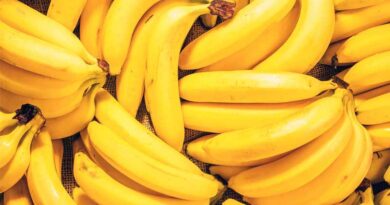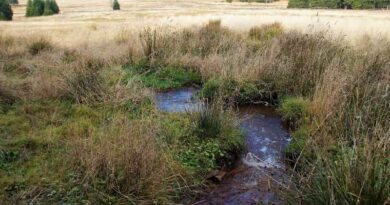World Environment Day: Making Waste Weeds Profitable an AI-Based tool from the Quiver of ICRISAT
- Rural Women in Odisha, India become self-reliant, converting simple waste into wealth by producing high-quality compost using Water Hyacinth biomass.
- ICRISAT scientists are developing tools based on drones, apps, and satellite data to capture data to monitor large-scale Water Hyacinth infestation.
- “The combination of the known science of composting and cutting-edge AI-based tools aims to turn the global challenge into an opportunity,” said Dr Sreenath Dixit, Global Research Program Director, Resilient Farm and Food Systems, ICRISAT.
- Digital tools can enhance preparedness to develop a financially viable business model for a large-scale processing unit based on weed mining.
04 June 2022, Hyderabad, India: The World Environment Day 2022 calls for living sustainably in harmony with nature, where efficient use of resources leads to development. At the International Crops Research Institute for the Semi-Arid Tropics (ICRISAT), researchers have taken this as a challenge and come up with many solutions. One very interesting such solution is the potential of the proliferating weed named Water Hyacinth and how this waste can be transformed into wealth. ICRISAT scientists are working towards developing digital tools and techniques to monitor this weed using satellite data thus, facilitating efficient utilization of Water Hyacinth biomass.
The scope of digital intervention to utilize the floating weed became evident during the Odisha Livelihood Mission project. This led to the harvesting of Water Hyacinth plants and the biomass produced was used to make high-quality compost by mixing it with paddy straw and cow dung. This simple technique helped local women to become self-reliant by turning simple waste into wealth.
Dr Aviraj Datta, Scientist, ICRISAT Development Center, said, “Utilization of Water Hyacinth biomass through aerobic composting technique has potential for wide-scale adoption and impact. There are more than 2000 Water Hyacinth-infested water bodies in Puri district of Odisha alone. Scale-up of such interventions is possible even for large-scale infested water bodies such as Lake Victoria in Africa, which has an approximate water surface area of 59,947 square kilometers.”
But efficient utilization of water hyacinth biomass on such a large scale requires on-ground data. Digital tools have the potential to assess details about the biomass quantity expected during different seasons on a large water body on a real-time basis.
Also Read: ADAMA & Groundwork BioAg Cooperate in Offering Mycorrhizal Products for Indian Farmers
ICRISAT, Hyderabad, India, and its partners: University of Stirling, Scotland; University of Strathclyde, Scotland; National Institute of Plant Health Management (NIPHM), Hyderabad, India; Sanatana Dharma College (SDC), Alappuzha, Kerala, India and CSIR-Central Scientific Instruments Organization (CSIO) Chandigarh, India are working on the project ‘Weed Watch‘ to develop digital tools which would enable real-time monitoring of water hyacinth mat using freely available multi-spectral satellite data such as Sentinel-1 or Sentinel-2.
For setting up a large-scale processing unit for water hyacinth biomass, it is important to forecast the temporal and spatial availability of water hyacinth biomass for a large water body such as Lake Tana in Ethiopia throughout the year. Digital techniques would greatly enhance our present capabilities in this regard through identifying the appropriate location of such processing unit, the scale of operation, and storage requirements. The commercialization of Water Hyacinth biomass can also boost alternative livelihood opportunities and can be used to create a wide range of products and art crafts. Sanatana Dharma College (SDC), Alappuzha, Kerala, India, has successfully incubated a few start-ups.
Dr. Srikanth Rupavatharam, Senior Scientist, Digital Agriculture, ICRISAT, said, “The potential use of AI tools and data captured via drones, satellites, and MPro app developed by ICRISAT ensure optimum use of water hyacinth biomass. It will provide a better understanding of the impact of water quality on water hyacinth infestation and estimation of the growth rate and nature of the mat.”
“The combination of known science of composting and cutting-edge AI-based tools aims to turn the challenge into an opportunity. ICRISAT and its partners’ research findings would be an actual demonstration of the power of ‘Science of Delivery,” said Dr. Sreenath Dixit, Global Research Program Director, Resilient Farm and Food Systems, ICRISAT.
Did You Know?
- Water hyacinth is a global challenge, whether in Africa’s Lake Victoria or the backwaters of Alleppy in Kerala, India. It adds pollution, clogs drainage, affects tourism in inland waterways, and severely impacts the livelihood of farmers in nearby areas.
- Research shows that 10 Water Hyacinth plants can reproduce 655360 plants covering approximately 0.5 ha water surface in just 8 months. Each Water Hyacinth plant generates about 4700 seeds that remain viable on the lake bottom for 20 years.
- Water Hyacinth biomass is valuable, as it not just proliferates rapidly; its plant tissues are also rich in nitrogen and phosphorous concentration. Weed mining is emerging as a sustainable solution when physical, biological, and even chemical means to eradicate these weeds have failed.















